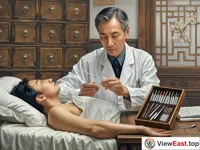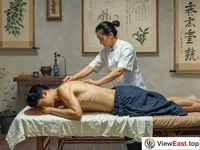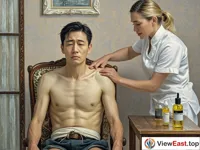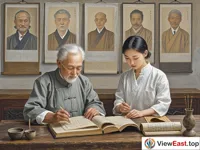






In Han Chinese culture, acupuncture and tuina (Chinese therapeutic massage) are not only methods for treating diseases but also a reflection of culture and philosophy. They represent the Han culture's profound understanding of the harmonious relationship between nature and the human body.
The Mystery of Acupuncture
Acupuncture is a traditional medical technique that involves the insertion of needles or the application of moxibustion at specific points on the body to regulate the flow of Qi (energy) and blood, thereby treating diseases. Its theoretical foundation lies in the meridian system, which posits that the meridians are pathways through which Qi and blood circulate, and by adjusting points on these meridians, one can affect the body's overall flow of Qi and blood.
The Power of Tuina
Tuina, also known as massage, is a therapeutic method that uses manual techniques applied to specific areas on the body surface to regulate physiological and pathological conditions, achieving therapeutic, rehabilitative, and health-promoting effects. Tuina not only alleviates muscle tension and pain but also promotes blood circulation and the body's self-healing capabilities.
Cultural Heritage
The practice of acupuncture and tuina is not only the inheritance of medical skills but also the transmission of culture. They embody the Han culture's pursuit of the concept of "unity of heaven and humanity," emphasizing the harmonious coexistence of humans and nature. These traditional therapies are still widely applied today and have gained international recognition and respect.
Far-reaching Impact
The acupuncture and tuina of the Han Chinese hold an important place in the cultural landscape of Chinese ethnicity and have also had a profound impact on world medicine. As part of China's intangible cultural heritage, they have been included in the UNESCO protection list, becoming a common wealth of all humanity.